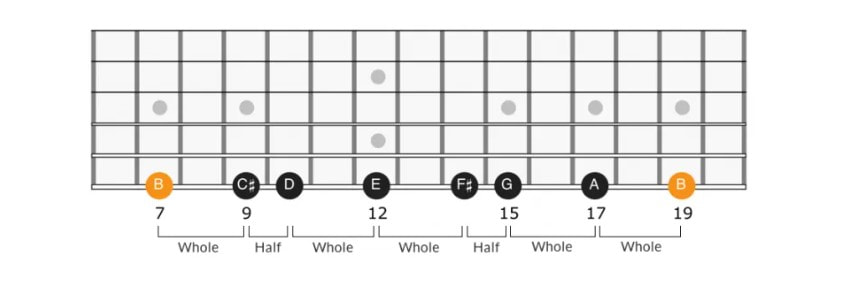In understanding the fundamental essence of the B minor scale guitar, we unravel a musical tapestry composed of specific intervals and notes. Each note in this scale plays a crucial role, contributing to the scale’s melancholic yet captivating sound. Let us delve into the nuances of this scale, exploring its intervals, finger positions, and varied patterns across the fretboard.
What is B minor scale guitar?
Exploring the intricacies of the B minor scale guitar is a valuable endeavor for any aspiring guitarist. This scale, as the relative minor of D major, shares the same set of notes, albeit arranged differently. Understanding the B minor scale not only widens your tonal range but also enhances your musical versatility, as it is a fundamental element present across various music styles and genres.
Diving into the world of minor scales is an excellent strategy to refine your auditory perception. The defining characteristic of a minor scale lies in its third interval, which is a half-step lower or “flat” compared to a major scale’s third. This subtle alteration in the third interval grants the minor scale its distinctively melancholic and emotive tonality. As you grasp the nuances of the B minor scale, you equip yourself with a powerful tool to convey a range of emotions through your guitar playing.
The B minor scale on the guitar follows a specific pattern of notes based on the B natural minor scale, which is a seven-note scale. The B natural minor scale consists of the following notes:
B – C# – D – E – F# – G – A – B
Scale fomular: Root – Major 2nd – Minor 3rd – Perfect 4th – Perfect 5th – Minor 6th – Minor 7th
Structure of Bm scale: W H W W H W W

Some B minor scale guitar positions
Bm scale – 7th position
To delve into the B minor scale at the 7th position on your guitar, start by positioning your index finger on the 7th fret of the low E string—the home to the B note. As you ascend, let your middle finger take charge of the 8th fret, followed by your ring finger confidently claiming the 9th. And then, your pinky gracefully handles the 10th fret, each frets a stepping stone toward the resonant tapestry you’re about to create.
Yet, the sonic path has a bend. When crossing onto the G string, make a subtle shift, nudging your hand up one fret to perch on the 6th fret with your index finger—an essential move to embrace the C# note. Feel the gentle shift beneath your fingertips as you navigate this melodic landscape.
As the scale flows, slide your index finger back down to the 7th fret on the G string, landing precisely on the soothing embrace of the D note. These finger choreographies, meticulously orchestrated, give life to the B minor scale in the 7th position, a musical voyage worth every subtle shift and graceful slide.

Other Bm scale positions
The B minor scale guitar can be played in multiple positions on the guitar. Each providing a different range and pattern across the fretboard. Typically, you can play the B minor scale starting from different notes within the scale and spanning multiple octaves.
There are no strict limits to the number of positions you can play the B minor scale in. As it ultimately depends on how you want to navigate the fretboard and the musical context you’re working within. However, here are a few common positions for the B minor scale on the guitar:
- B minor scale starting from the 2nd fret (2nd position) – Starting from the B note on the A string.
- B minor scale in open position – Starting from the B note on the low E string (similar to the 7th fret position but utilizing open strings).
Through this exploration, we aim to equip aspiring guitarists with the knowledge and tools to embrace the B minor scale guitar fully. Whether you’re a beginner seeking to or an intermediate player yearning, let’s embark on this enlightening journey into the fundamental realm of the B minor scale on the guitar.
